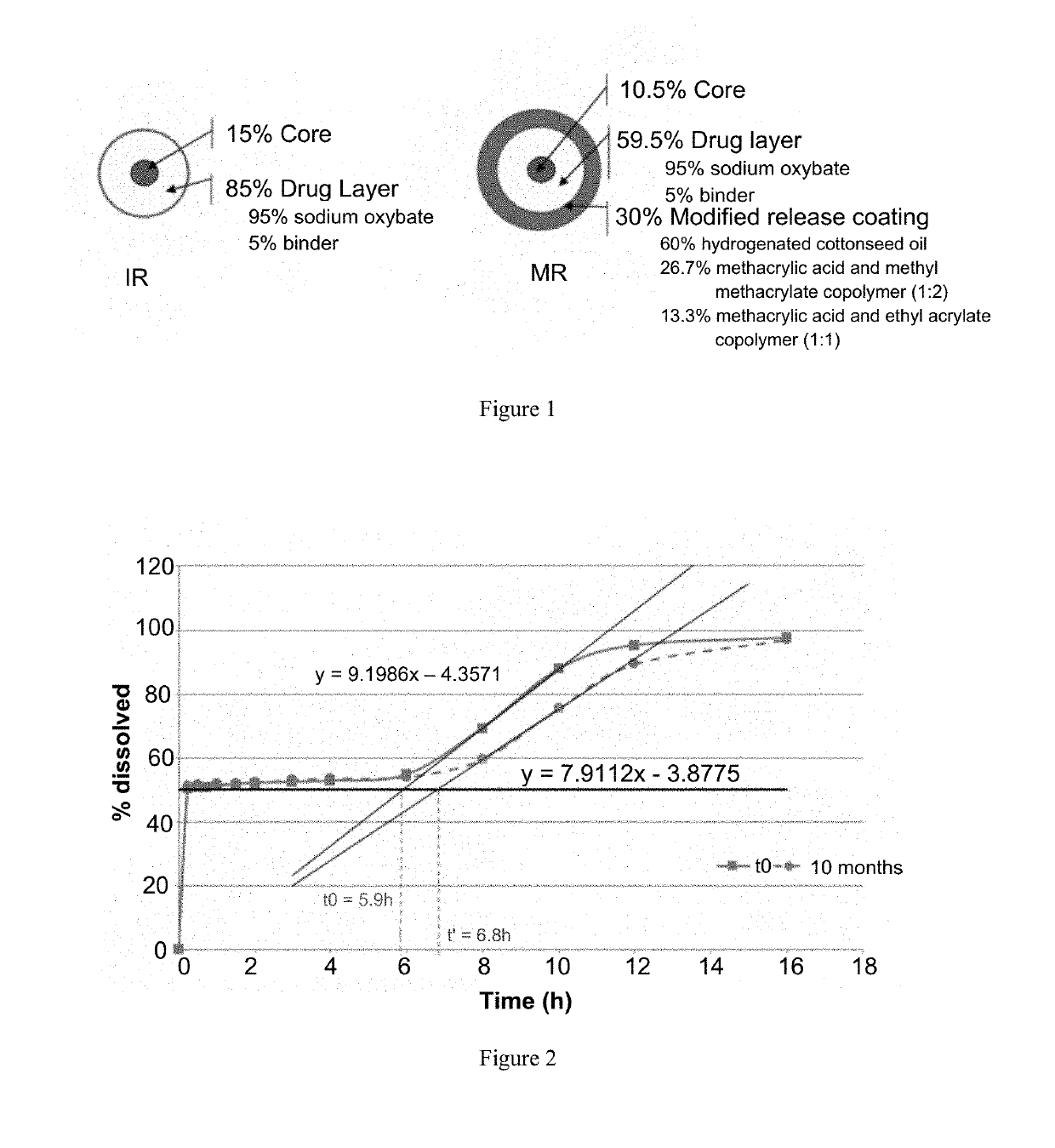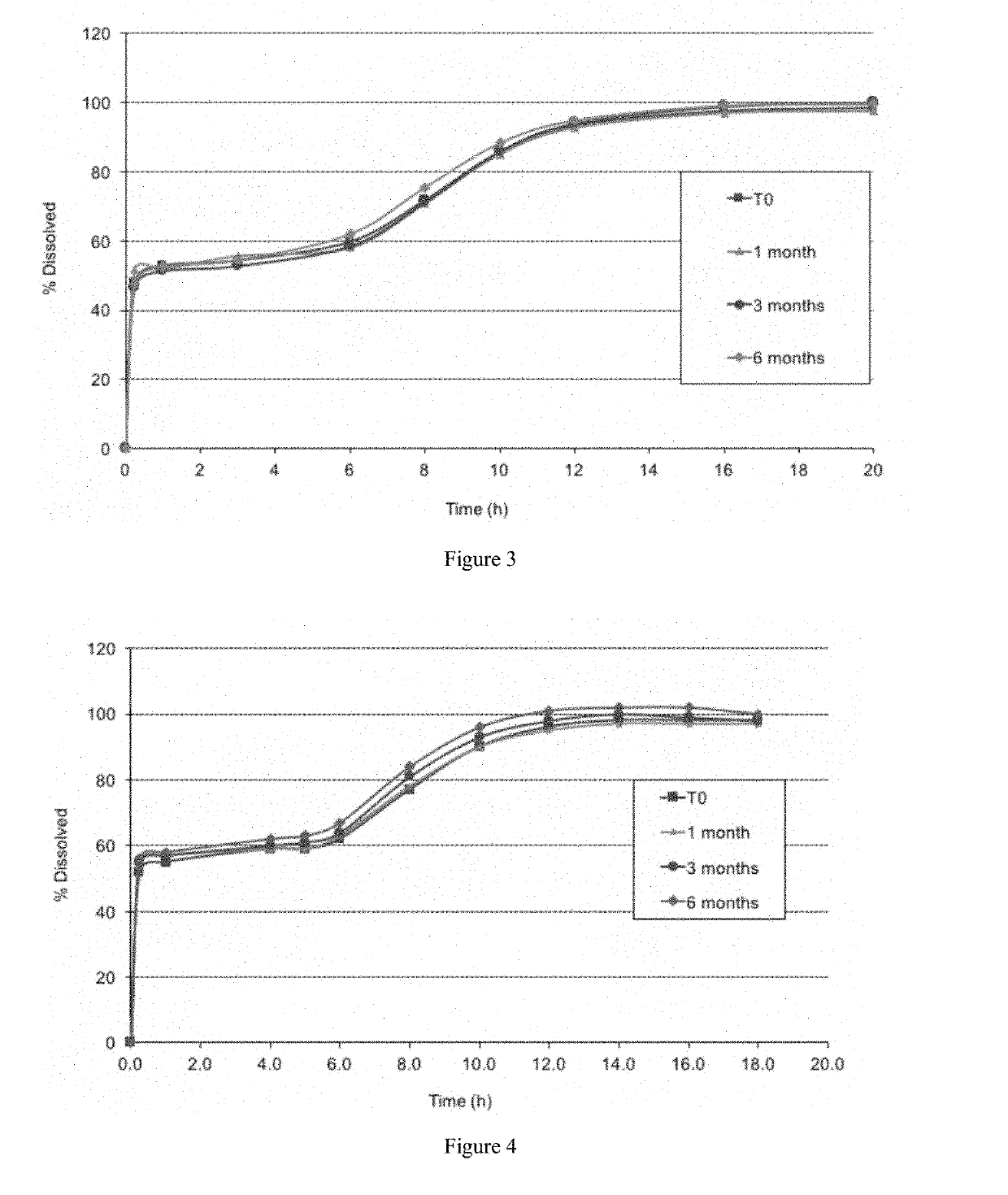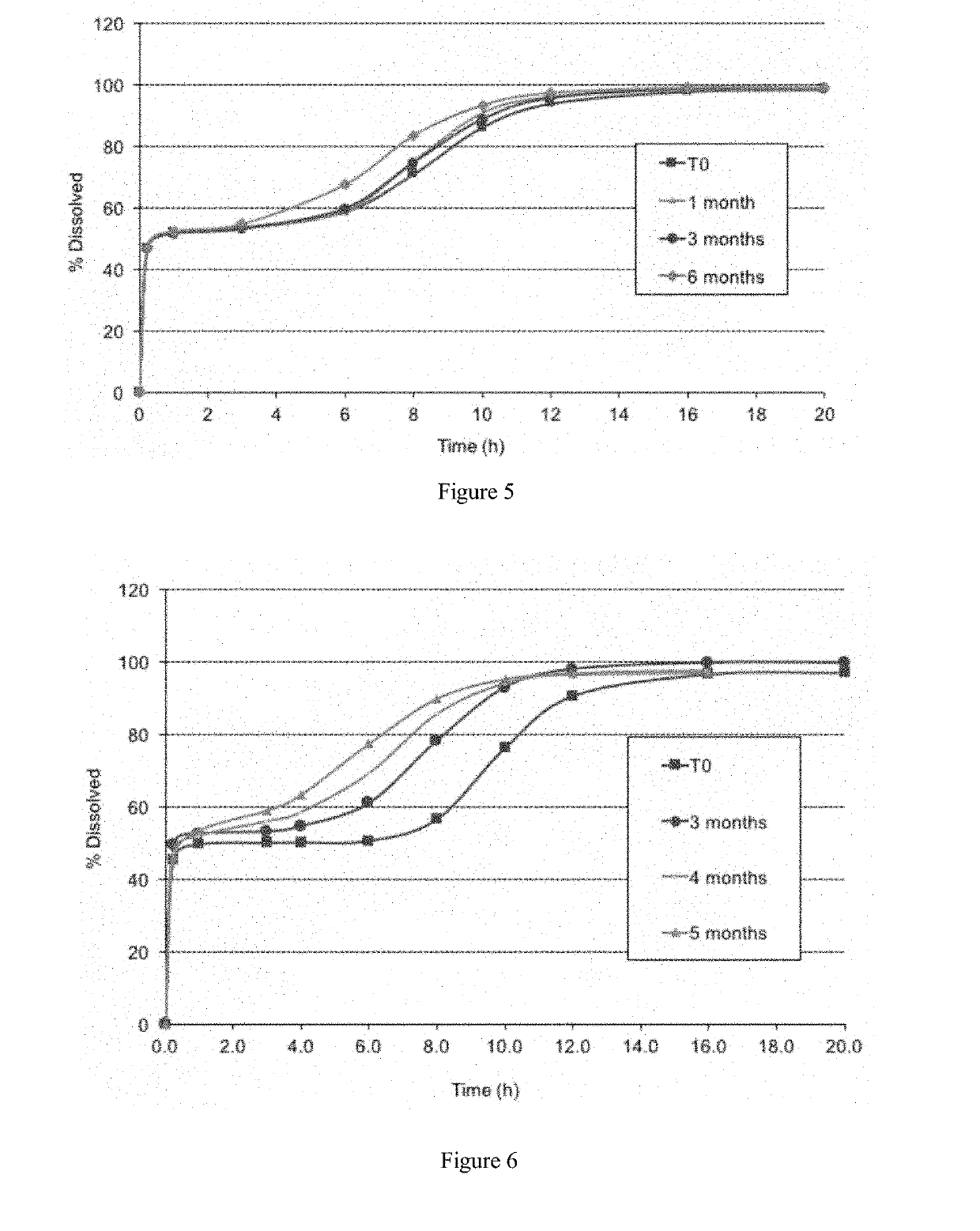Packaged modified release gamma-hydroxybutyrate formulations having improved stability
- Summary
- Abstract
- Description
- Claims
- Application Information
AI Technical Summary
Benefits of technology
Problems solved by technology
Method used
Image
Examples
example 1
Manufacturing Formulations Used in the Succeeding Examples
[0234]The two formulations used in the succeeding examples and their manufacturing processes are given below. Test results from these two different formulations were practically indistinguishable.
First Formulation
[0235]Tables 1a-1d provide the qualitative and quantitative compositions of sodium oxybate IR microparticles, MR microparticles, and mixtures of IR and MR microparticles, of the first formulation. The physical structure of the microparticles showing the qualitative and quantitative composition of the IR and MR microparticles is depicted in FIG. 1.
[0236]Briefly, sodium oxybate immediate release (IR) microparticles were prepared as follows: 1615.0 g of sodium oxybate and 85.0 g of polyvinylpyrrolidone (Povidone K30—Plasdone™ K29 / 32 from ISP) were solubilized in 1894.3 g of absolute ethyl alcohol and 1262.9 g of water. The solution was entirely sprayed onto 300 g of microcrystalline cellulose spheres (Cellets™ 127) in a...
example 2
Evaluating Dissolution Stability of Exemplary Formulations
[0242]An analysis was undertaken to evaluate the dissolution stability of packaged formulations containing 50% of the sodium oxybate dose in immediate release particles and 50% of the sodium oxybate dose in modified release particles, corresponding to the second formulation in example 1. The formulation was packaged in DUMA™ bottles with 2 g silica gel desiccant. The formulation was tested in a dissolution apparatus 2 according to USP 38 in 0.1N hydrochloric acid at a temperature of 37° C. and a paddle speed of 75 rpm. Single dose units were poured into a container containing 50 mL of tap water and shaken to form a suspension. After 5 minutes, the suspension was poured into a dissolution vessel containing 840 mL of 0.1 N HCl dissolution medium. 10 mL of water were then used to rinse the container and subsequently added to the dissolution vessel. A sample of the formulation was tested shortly after it was prepared at month 0,...
example 3
n of Effect of Packaging Type on Dissolution Stability
[0247]In order to determine the effect of packaging type on the dissolution stability of the formulations of the present invention, a formulation manufactured according to Example 1 (first formulation) was packaged in various containers and evaluated via dissolution testing according to the method described in Example 2. The results of the testing are reported in Table 3:
TABLE 3Max of Δ(% APIt′− t0dissolved) asSupplier (type ofPackagingas described indescribed inpackaging)referencesexample 2example 2*Bischof & KleinPET / ALU / PE0.24 h (3 months2 (3 months(sachets)with 9 μm ALU foildissolution datadissolution dataconsidered)considered)Constantia (stick-pack)PET / adhesive0.1 h (3 months4 (3 monthslayer / ALU / dissolution datadissolution datacopolymer withconsidered)considered)12 μm ALU foilLOG ™Bottle: H2OO2:−0.54 h (3 months4 (3 months40 ml White Bot.dissolution datadissolution data33 / 400 MBF 20considered)considered)Cap: 33 mm WhiteCR Ca...
PUM
| Property | Measurement | Unit |
|---|---|---|
| Temperature | aaaaa | aaaaa |
| Temperature | aaaaa | aaaaa |
| Fraction | aaaaa | aaaaa |
Abstract
Description
Claims
Application Information
 Login to View More
Login to View More - R&D
- Intellectual Property
- Life Sciences
- Materials
- Tech Scout
- Unparalleled Data Quality
- Higher Quality Content
- 60% Fewer Hallucinations
Browse by: Latest US Patents, China's latest patents, Technical Efficacy Thesaurus, Application Domain, Technology Topic, Popular Technical Reports.
© 2025 PatSnap. All rights reserved.Legal|Privacy policy|Modern Slavery Act Transparency Statement|Sitemap|About US| Contact US: help@patsnap.com



